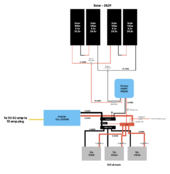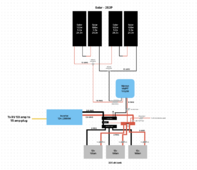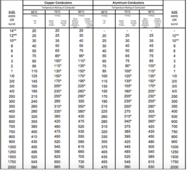Can you guys check my diagram for issues? I'm getting conflicting info. Just trying to have a simple system when boon docking a couple times a year to run laptops and internet.
400 watt on roof of RV
305 ah battery bank
Victron 1200va, 1000 watt inverter, connecting to shore power on RV, turning off RV converter when hooked this way.
Shunt
150/30 viltron solar controller
Gauge size and fuses were my main concern (unless im missing something)
-Chris
400 watt on roof of RV
305 ah battery bank
Victron 1200va, 1000 watt inverter, connecting to shore power on RV, turning off RV converter when hooked this way.
Shunt
150/30 viltron solar controller
Gauge size and fuses were my main concern (unless im missing something)
-Chris






